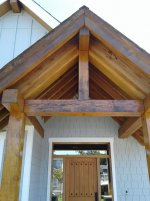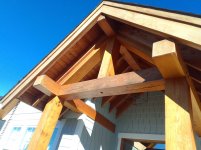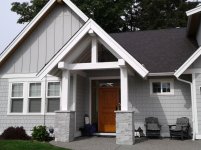westcoastpainter
Member
- Joined
- Dec 5, 2020
- Messages
- 18
I'm trying to avoid using a chemical stripper. The homeowners want the Sikkens coated posts/beams/rafters (photos attached) to be changed to solid white paint or stain. The ceiling slats and door will remain as they are.
I've already used my ETS EC 150/5 Random Orbital on some of the larger flat surfaces. My local supplier gave me 80 grit Abranet to use. It worked okay. I had to change to a new piece every couple of feet. I welcome any other suggestions for paper.
The other sander I have it the RTS400, but I can't see it being of any use on this.
I was thinking of getting the Festool Rotex RO 90 DX to use on the rest of it. Thoughts? It wouldn't sit idle afterwards, as a residential painter I could see myself using it for many interior projects and other exterior work.
Thanks in advance
I've already used my ETS EC 150/5 Random Orbital on some of the larger flat surfaces. My local supplier gave me 80 grit Abranet to use. It worked okay. I had to change to a new piece every couple of feet. I welcome any other suggestions for paper.
The other sander I have it the RTS400, but I can't see it being of any use on this.
I was thinking of getting the Festool Rotex RO 90 DX to use on the rest of it. Thoughts? It wouldn't sit idle afterwards, as a residential painter I could see myself using it for many interior projects and other exterior work.
Thanks in advance




